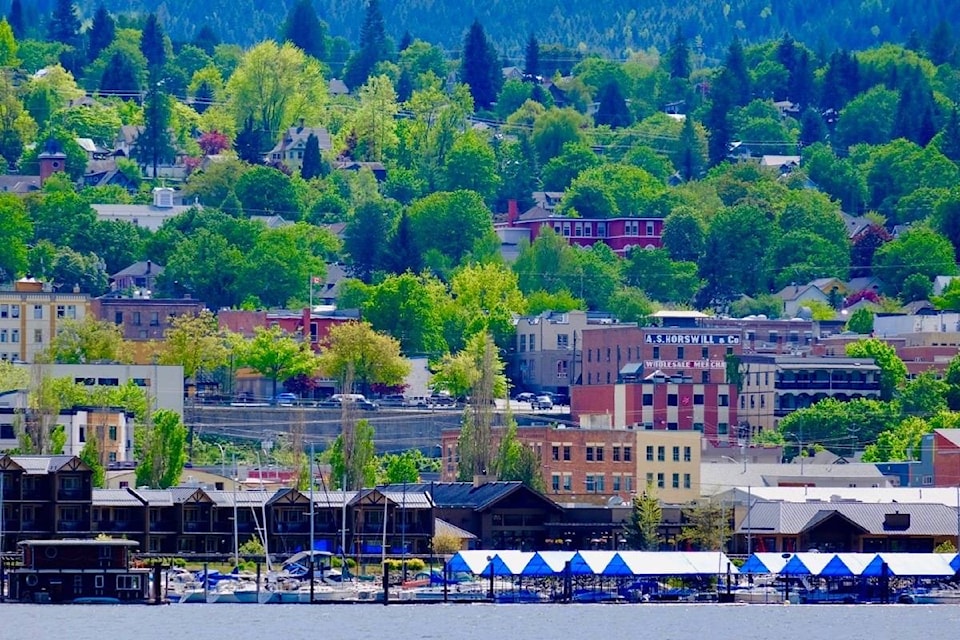by Timothy Schafer
Local Journalism Initiative Reporter, The Nelson Daily
Nelson’s poverty rate is nearly twice the provincial and national averages, according to a new community-based report.
The Together Nelson plan — formulated by leadership roundtable drawn from the community — found that over 2,100 people live below the poverty line in Nelson, amounting to 19 per cent of the population.
That contrasts with a provincial rate of 8.9 per cent and a national rate of 10.1 per cent. Most of the West Kootenay communities were found to be above the provincial average, with Rossland and Fruitvale at 10 per cent and Castlegar and Trail at 14 per cent.
According to the findings, Salmo was higher than Nelson at 23 per cent, while Slocan was at 40 per cent.
Of the 19 per cent living in poverty in Nelson, six per cent are homeless (132 people) — unsheltered, emergency sheltered or provisionally accommodated — while 94 per cent were people who were unable to make ends meet (single parents, children, seniors, low-income earners, people with health/mental health challenges).
“We also know that this is a very conservative number for what our true rates of poverty likely are because we know that the true measure doesn’t fully reflect the cost of living in Nelson,” said Kady Hunter, Together Nelson leadership roundtable member.
“And we also expect that COVID has increased this number over the last year.”
The rate of poverty among children in the city is greater than is seen, she added, with 25 per cent of Nelson’s children (18.5 per cent provincial, 18.2 national) below the poverty mark. Nearly 48 per cent of single-parent households — 75 per cent female led — are considered below the poverty line.
Hunter said the roundtable also suspected that the number of people living in poverty was greater than who might visibly appear to be living in poverty
“The breadth of poverty in Nelson is greater than what you might picture or see,” she added.
Too many low paying jobs in the community simply guarantees a certain level of poverty. Most two parent, two child families earn $59,280 per year before tax, while a living wage for Nelson requires $72,760.
“This really speaks to the discrepancy between income and cost of living,” said Hunter, adding that a living wage does not include an allowance for the cost of living.
By the numbers
A 2019 living wage in Nelson was calculated at $18.46 per hour, which includes the amount to cover basic expenses — food, clothing, rental housing, childcare and transportation plus a small amount of savings to cover illness or emergencies — for a family of four.
There is a total of 150 families (19 per cent) with an annual reported income of less than $70,000 in 2018, contrasted with an annual cost of living (based on a living wage calculation) at $72,760.
“The number of community members living on less than a living wage is higher than the number of community members living below the low-income measure poverty threshold,” noted a report from Together Nelson.
“This means that more than 19 per cent of Nelson’s population is living on less than what is needed for a basic, minimum standard of living that a living wage would afford, but the exact percentage is unknown.”
Looking ahead
Uncovering the data is one thing, doing something about it is another. Together Nelson will be launching a detailed four-year action plan in October to help reverse the statistical story of poverty.
After the launch of the plan Together Nelson will be connecting with the City of Nelson to explore opportunities to advance the top-10 points of the plan.
Some secondary stream funding may be available from Union of BC Municipalities for implementation of the action plan.
There is a need to offer counselling, education, training and free daycare to help lift people out of poverty and overcome the barriers and gaps such as:
• Affordable housing;
• Affordable and available childcare (including after-school care);
• Convenient and affordable transportation options;
• Access to healthy and affordable food;
• Access to technology and digital literacy;
• Financial literacy support;
• Good paying, stable, ongoing jobs; and
• Presence of stigma and discrimination preventing access to opportunities, supports and services.
Follow the money
The impetus for the plan and the roundtable come from a disturbing trend: rural poverty rates have consistently exceeded urban rates since the 1960s.
In addition, the pandemic’s impact on employment has “highlighted that many live pay cheque to pay cheque with no financial cushion to weather a sudden change in employment.”
Funding for the Nelson project came from Together BC’s Poverty Reduction Strategy, a program created to encourage poverty reduction planning to the municipal level. Nelson was one of 29 B.C. communities to receive Together BC funding.
With funding from Columbia Basin Trust, Nelson at its Best created Together Nelson to bring together community members with “living, or lived, experience, of poverty with thought leaders across Nelson’s business, government, Indigenous and Métis communities and community-based, non-profits” to design and development an action plan.
READ MORE:
• Annual homelessness report shows pandemic’s impact in Nelson
